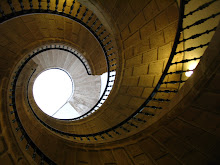
Some artists feel it necessary to leave their homeland in order to find themselves. The Spanish painter Miquel Barcelo is one of those artists.
Miquel Barcelo can be considered part of the post-Franco artistic movement in Spain that was able to develop after the election of the socialists in 1982. These artists did not have in common any particular style neither were they aware of being part of a movement. They made works that ranged from lush figurative paintings (Guillermo Perez Villalta, Miquel Barcelo) to austere constructivist sculptures (Susana Solano, Cristina Iglesias).
Placing these Spanish artists in the international context is crucial to the understanding of their uniqueness and strength. Given the present status quo in which cleverness is rated higher than creativity, artistic prospect in the Western world falls short of hope resulting in a replacement of aesthetic values for monetary ones. In the contemporary artistic world the term ‘postart’, coined by Alan Kaprow, seems ironically appropriate.
It is in this background that Spanish art that gestated in the 1980s hit a peak in the 1990s with unprecedented international impact. Democracy alone did not bring about the Spanish art boom. Institutions and private foundations like La Caixa and Caja Madrid and state funding together with the creation of Madrid art fair ‘Arco’ in 1982 helped to make it possible for artists to thrive. It was precisely in the midst of this national and international effervescence, just when Barcelo was experiencing his first artistic success, that he decided to go to Africa ‘in search of uncertainty’ .
Barcelo made his first trip to Africa in 1988. He crossed the Sahara and settled on the banks of the Niger River, at Gao, in the republic of Mali. He then met the Malian sculptor Amahigueré Dolo, whose work is imbued by the Dogon culture and mythology. They soon became work mates and friends. Barceló decided to extend his stay in Africa for another six months to explore Mali and the neighbouring areas of Senegal and Burkina Faso. From the very start in Africa, he drew fundamental knowledge for making new pigments, despite the difficulties caused by the extreme heat, dust, sandstorms, and termites. During his stay in Africa he kept a journal, which has been recently edited and published under the title ‘Cuadernos de Africa’.
There are no certainties when a work by Barcelo needs to be catalogued by curators. His approach to material is both economic and primeval. In a recent interview about his retablo in the Chapel of Sant Pere in Palma , he explains his choice to work with clay ‘because it is a very elemental and previous-to-art material’. Such a choice of material in a digital era is nothing but a powerful statement in itself. What makes Barcelo’s works interesting for the viewer constitutes a nightmare for conservators. Pieces of organic matter, bones, sand and whatever happens to participate in the moment of creation are welcome by the artist. We read in his ‘Cuadernos de Africa’ that sand blown by the wind covers his African canvas and that he even once dipped a sketchbook in a termite hole only to work around the marks that the insects had left on it afterwards.
Africa offers Barcelo what the academic life did not. He powerfully describes it when he says in his ‘Cuadernos de Africa’: ‘The Dogon country is like a gigantic Buddhist garden where everything makes sense, although at the same time and in many different ways’.
Although Barcelo benefits from Africa’s culture, his quest for the essence of things does not leave the Dogon people untouched. As he writes in his ‘Cuadernos de Africa’, he periodically lives in the Dogon region, becoming part of village life and interacting with them. So, what do the Dogon people receive in this exchange? They receive Barcelo himself. This is clearly exemplified in his journal entry in ‘Cuadernos de Africa’: ‘As it’s Christmas Eve, I told the Dogons about the life of Christ; then, the lives of Caravaggio, Frankenstein and Billy the Kid. I mixed them all a bit. It made a great impression on them (Mali, 24th December, 1994).’
Barcelo finds in Africa a new order of things. And he documents this ‘A woman is worth five cows, a cow is worth ten goats, a goat costs 125 francs.’
We could cynically consider Barcelo as a sort of enfant terrible, just another little Rimbaud playing anthropologists. But it is only when we place Barcelo in the contemporary art world scenario that we can begin to appreciate his escapes to Africa, his choice of materials and his painting techniques.
In a world in which art is considered to have reached a dead end, and where the trend of thought goes from ‘emptiness’ to ‘stagnant narrow ideological interests’, contemporary Spanish artists have something to say. It is in this context that a painter such as Barcelo should be analysed and valued. A painter who in spite of living in a digital era knows how to engage in a raw emotional dialogue with the media he uses in his work, be it paint or vegetables, sand or clay.
Barcelo has recently completed the Cathedral retablo in Mallorca, his native island. Some art critics marked this event as a culmination of a circular journey that ends at the point of departure. Perhaps it would be better to consider this work as just another step in the artist’s search for the roots of things. Or as he puts it in his African book: ‘pintamos porque la vida no basta’ (We paint because life just isn’t enough).

